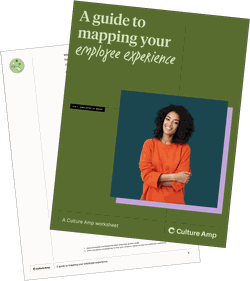
Performance management post-COVID-19: Biases to consider

Written by

Senior People Scientist, Culture Amp
COVID-19 has disrupted how organizations operate, with many experiencing reduced hours, adjusted goals, furloughs, or even layoffs.
Thus it is necessary for organizations to re-evaluate aspects of their performance management system to better respond to the current context of their organizations. Performance management conversations can be a daunting experience for managers and employees when they are not carried out correctly. During a pandemic with a lot of uncertainty and economic downturn, employees’ worries are likely to be amplified.
Carrying on with your performance management process without any amendments will likely lead to negative experiences for your employees and biased information to make decisions on, such as decreasing short- and long-term motivation, increasing burnout, declines in perceptions of fairness, and could even result in managers holding back critical feedback.
Therefore, carrying out performance management conversations within a thoughtfully adjusted performance management framework can help create a sense of stability amongst your employees, strengthening the perception that the process and outcomes are fair and making it easier for managers and others to provide reinforcing and redirecting feedback.
Let’s talk about biases
Researchers and practitioners have identified dozens of biases that impact our ability to provide objective performance reviews. Systems and processes developed for in-office work and pre-COVID times must be updated to create more fairness in the new work environment. One of the biggest concerns is that organizations may be more susceptible to biases that negatively impact how accurately you measure the performance of your employees and how well you can provide valuable feedback that drives and develops high performance.
Recency Bias
“What have you done for me lately? It’s true most of us are more likely to remember things that have happened recently than things that have occurred throughout the entire year or quarter, i.e., the performance cycle.
It is possible, for example, that one of your employees was performing highly at the beginning of the year; however, the transition to working from home has been difficult for a myriad of potential reasons (some that you may not even be aware of). You will want to prepare yourselves and others to consider the performance of an employee throughout the entire performance period rather than focusing on recent performance since the start of COVID-19.
Moving forward, by ensuring that managers are documenting an employee’s performance and development and highlighting their key wins, future biases can be alleviated and can help keep employees motivated.
Proximity Bias
Your organization has likely moved to a large (if not fully) remote working environment. Be wary of the impacts of proximity bias – the notion that people place higher value and impact on work that they see or are directly aware of. In a virtual working environment, it’s easy to discount work that we aren’t seeing ourselves.
We recommend coaching and enabling managers to have regular check-ins with employees to keep up to date with the current state of their projects and day-to-day accomplishments, as well as their wellbeing. This is also an opportune moment to utilize 360-degree feedback; others in the organization are likely more privy to the work of your direct reports, so make sure to ask.
Idiosyncratic Rater Bias
Fun to say but not fun to experience. This bias essentially encompasses the tendency of humans to evaluate others based on their own skill level instead of the skill level of the person being rated. This means that people rate others less favorably on skills they’re really good at and conversely, if they’re not so good at something, they rate others less favorably. Ratings also depend on how “tough of a rater” a person thinks they are.
We all know the impact of working remotely differs individually – some folks are doing great, while others may be struggling. It is possible that, for example, a manager who has had a relatively simple time transitioning to working remotely will rate employees who may be struggling more to balance their workload simply due to their personal eccentricities. It’s also important to note that, as we cut down on aspects of the performance process (i.e., self-reflections, or peer and upward feedback), this bias can be amplified.
This bias is not necessarily more amplified by the pandemic or remote work but by the decisions made due to these changes. The most powerful ways to mitigate this are frequent manager-employee check-ins (and documentation), requesting and considering 360 feedback from people the employee works with before reviews, and including behaviors aligned with the organization's core values. Thus, when abbreviating or lightening the performance management process, it is crucial to not entirely skip over these modules.
Gender Bias
We’ve all heard of gender bias, but how does it play out in performance management? Through analyzing over 25,000 pieces of peer feedback, Culture Amp has found that individuals tend to focus more on the personality and attitudes of women. On the other hand, men tend to receive feedback that is more based on behaviors and accomplishments.
Amid a crisis, the above biases (and more) will likely be exemplified for women, especially as we omit portions of the review process. Women may often take on unglamorous tasks necessary for business success but go unnoticed.
Ensure you train managers to provide structured feedback and formalized criteria to assess their direct reports. This can help them concentrate on assessing women based on their behaviors and accomplishments rather than personality attributes.
Where to look for possible biases, and how to mitigate them
Self-reflections
Self-reflections can serve employees by helping them take a step back, reflect on the current situation, integrate learnings, plan for the future, and celebrate accomplishments (both personal and professional), especially during a time of uncertainty.
You’ll want employees to take a moment and consider their goals and priorities before the pandemic, how much they achieved in reaching those goals, and what accomplishments they’ve had since the start of the pandemic. Here are how questions regarding accomplishments pre-COVID differ from those you should be asking post-COVID.
Question regarding accomplishments pre-COVID
- How far were you from reaching your goals?
Questions regarding accomplishments post-COVID
- What additional tasks did you take on to get the company through the pandemic?
- What skills or knowledge have you developed over the last (time frame) that enabled you to be successful during the crisis? ([Description] Reminder: Your manager has likely less visibility on your behaviors and accomplishments. This is your space to fill in the gaps for them.)
- How has the crisis allowed you to work on additional projects you previously did not have the opportunity to?
- Given the changing nature of many businesses during this time, what additional tasks or roles did you take on to contribute to getting the company through the pandemic? What challenge are you most proud of overcoming?
- Have your career aspirations or development goals changed as a result of the pandemic?
- Where would you like to see yourself grow?
Peer and upward feedback
There are biases in 360 feedback that have to be considered.
For example, in a distributed workforce, employees who had to remain in the office or on-site may have different perceptions of others’ work than those who could work from home (i.e., proximity bias).
Manager review
A crisis or pandemic causes a lot of disruption in organizations. It has led to many different outcomes for employees ranging from taking on additional work to support their organizations, being redeployed based on the needs of the organization, or adjusting their hours to balance additional responsibilities outside of work.
As such, many employees will have adjusted their goals, either because they were not reachable anymore due to lockdowns, etc., or the organization’s priorities and mission have changed. Ensure that your review questions objectively ask about an employee’s behaviors, growth, and performance against goals and expectations while considering the impact of COVID-19.
For example, you may want to include an open-ended item asking, “How did this employee go above and beyond to help the organization during this time?” or “How did the employee perform on their adjusted goals?”
Fair feedback and appraisal are crucial for your employees to remain or become high performing, engaged, and motivated. It is also crucial for managers to perceive the process as fair before having feedback conversations with their employees.
Ensuring employees are rated on the same questions and managers receive adequate training around the new rating questions, as well as around biases they may unconsciously be bringing to the performance review process, are critical in ensuring fairness and mitigating bias during this turbulent time.
Ensuring employees feel valued moving forward
As a result of the uncertainty the pandemic has posed on our lives, performance management can play a key role in ensuring employees feel that their contribution is valued. Conducted fairly, performance processes can give employees some stability and motivation moving forward. Adjusting performance management processes can have a big impact on how employees view their workplace and their roles. Organizations that recognized and rewarded employees, helped them learn and develop through feedback, and treated them fairly, will likely have emerged stronger from the pandemic than those who do not.




